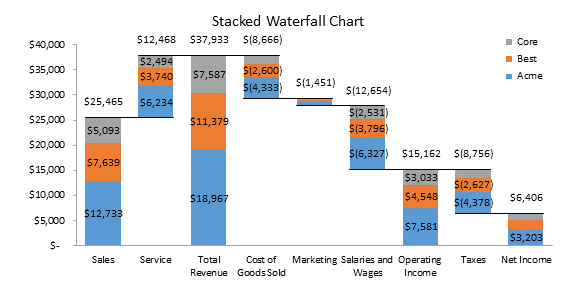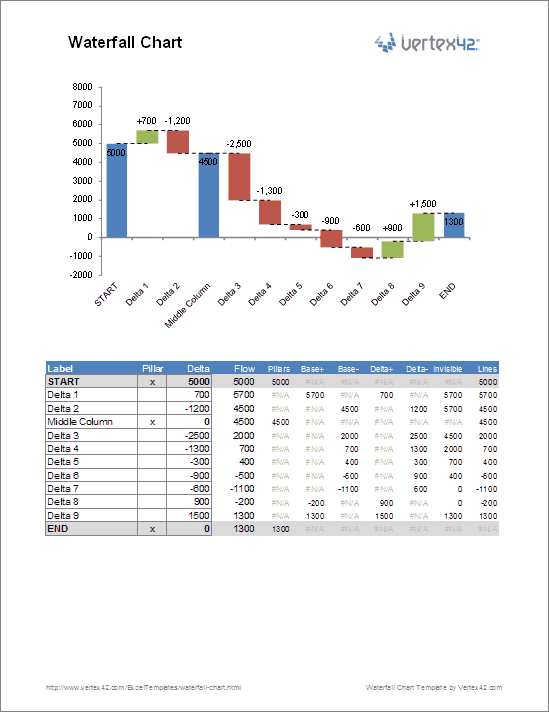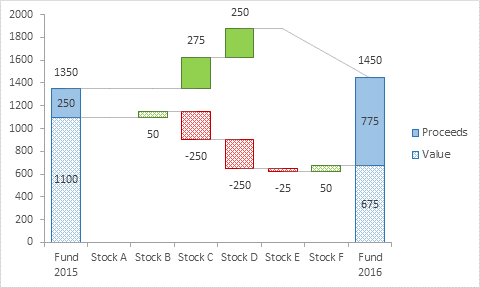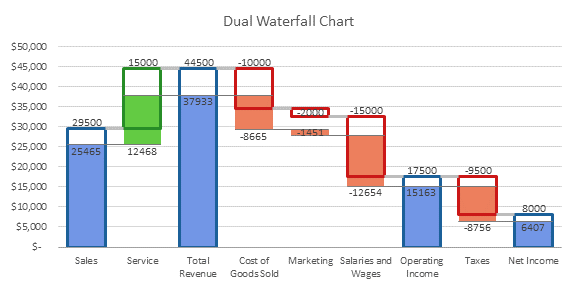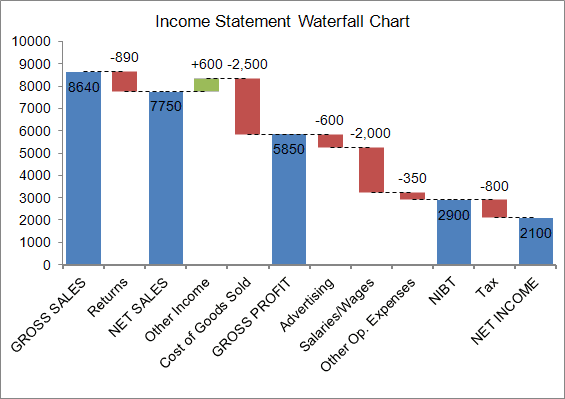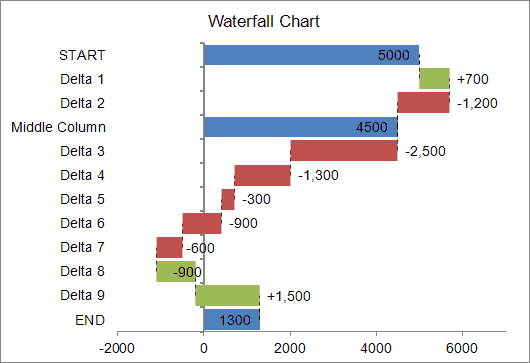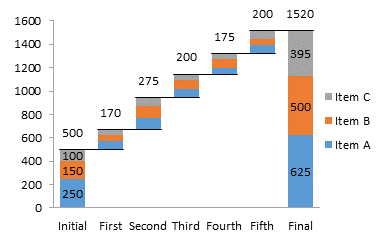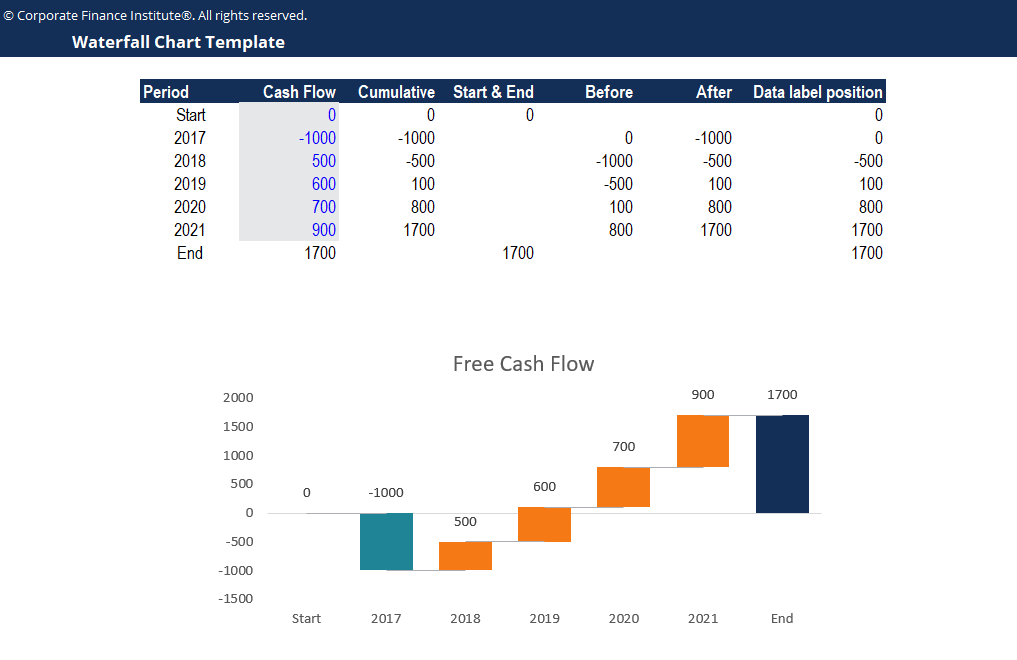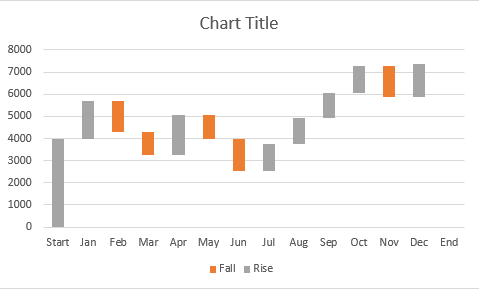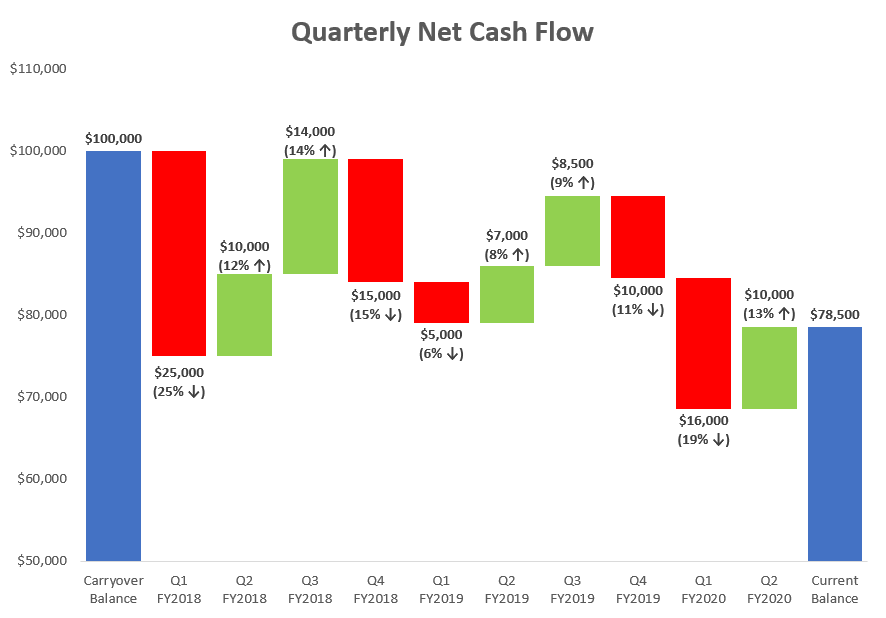Beautiful Work Stacked Waterfall Chart Excel 2016 Template
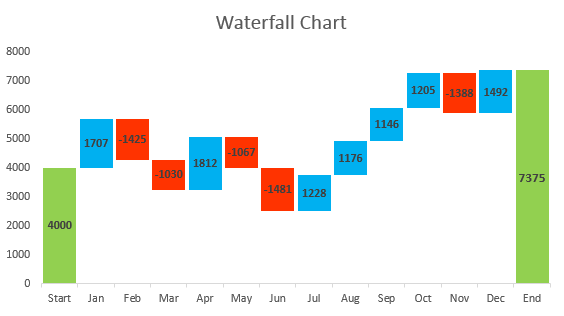
Make a standard Excel Bar chart based on Start date.
Stacked waterfall chart excel 2016 template. The waterfall chart is used to show how a starting value is affected by a series of positive and negative values while the stock chart is used to show the trend of a stocks value over time. Waterfall Chart in ExcelTable of Contents Waterfall Chart in Excel. This has been a guide to Waterfall Chart in Excel.
Excel 2013 does not support the waterfall chart by default as a built-in chart type. Waterfall Chart in excel is quite a different but very useful tool used to show the up and down in the data where each tower. This is a built-in chart type in Excel 2016.
Here we discuss its uses and how to create Waterfall Chart in Excel along with excel example and downloadable excel templates. This lets you preview data as a 2-D or 3-D line or area chart. Create a Bubble Chart.
This will change the chart a lot and it will start taking a form that we want this excel line chart to be. All you need to do is to enter your data into the table and the Excel waterfall chart will automatically reflect the changes. Select No Fill for Average Area Stacked Chart.
This article demonstrates a protocol for building clustered-stacked column and bar charts in both modern versions of Excel that is Excel 2003 and earlier and Excel 2007 and later. XViz has released a new PBI Certified version 115 of the Waterfall Chart which now supports the commonly requested idea place request for Stacked Waterfall chart option and Only values waterfall along with existing use cases of Variance breakdown analysis. If you are working with Excel 2010 or Excel 2013 we have good news for you.
You may also look at these useful functions in excel Gantt Chart Examples. The version in my tutorial is a regular full-featured Excel chart which allows clever users to customize it as desired. A Waterfall Chart or Bridge Chart can be a great way to visualize adjustments made to an initial value such as the breakdown of expenses in an income statement leading to a final net income value.
